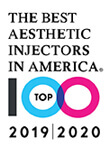Acne – Definition And Treatment In Simple Terms
Welcome to our blog. A place where our doctors and staff will be providing you with the latest information from our practice, and what's happening in our industry.
Acne – Definition And Treatment In Simple Terms
One of the most common reasons for seeking dermatologic care is for the evaluation and management of acne. Although primarily a disease of adolescence, acne can afflict infants, young adults and people in their forties and fifties. In simple terms, acne results from the action of hormones and other substances on the sebaceous (oil) glands and hair follicles. The sebaceous glands make an oily material called sebum that normally empties onto the surface of the skin via openings in the hair follicles (pores). Oil and cells that line the follicle (keratinocytes) can plug the opening. This, in turn, allows bacteria that live on the skin surface to grow and produce chemicals that attract inflammatory cells. The wall of the hair follicle can then rupture, spilling sebum, keratinocytes and bacteria into the surrounding skin. This results in the formation of “pimples”.
There are several types of acne. Comedones are plugged follicles without associated inflammation. Papules are small inflamed acne lesions that are red and tender. Nodules and cysts are deeper, painful inflammatory lesions that can lead to scarring.
The cause of acne is unknown and probably multifactorial; nevertheless, there are many myths on the subject. Chocolate and greasy foods do not cause acne, nor does dirt on the skin. However, there are things that can exacerbate acne in those with the disease: changing hormones (in adolescence or before menstrual periods), stress, oil in skin products, pressure from sports helmets, squeezing acne lesions and scrubbing of the skin.
Just as there are multiple types of acne, many treatments exist. There are over-the-counter and prescription medications that are very effective in treating acne. Depending on the type and severity of the condition, your doctor may recommend topical therapies, oral medications or both. The mainstays of therapy are topical retinoids (vitamin A derivatives) to unclog pores and topical or oral anti-inflammatory medications and antibiotics. For girls and women with acne, oral contraceptives and other medications that regulate hormones are used. The treatment of choice for scarring acne is isotretinoin (Accutane), and use of this very effective medication must be monitored closely by a dermatologist.
In addition to medications, there are cosmetic procedures which can improve acne. Chemical peels with exfoliating substances such as glycolic acid can be quite beneficial as an adjuvant to traditional acne therapy. Some relatively new, innovative treatments for acne using certain wavelengths of light and lasers are becoming more popular.
About the author
Doctor Robyn E. Glaesser is a practicing Dermatologist at Ironwood Dermatology located at 1735 E. Skyline Drive • Tucson, AZ 85718 • 520-618-1630 • Fax: 520-618-1636
www.ironwooddermatology.org












